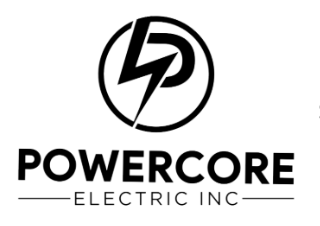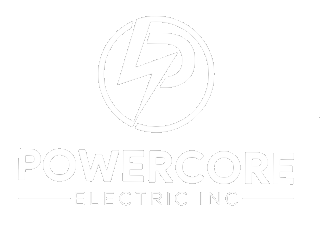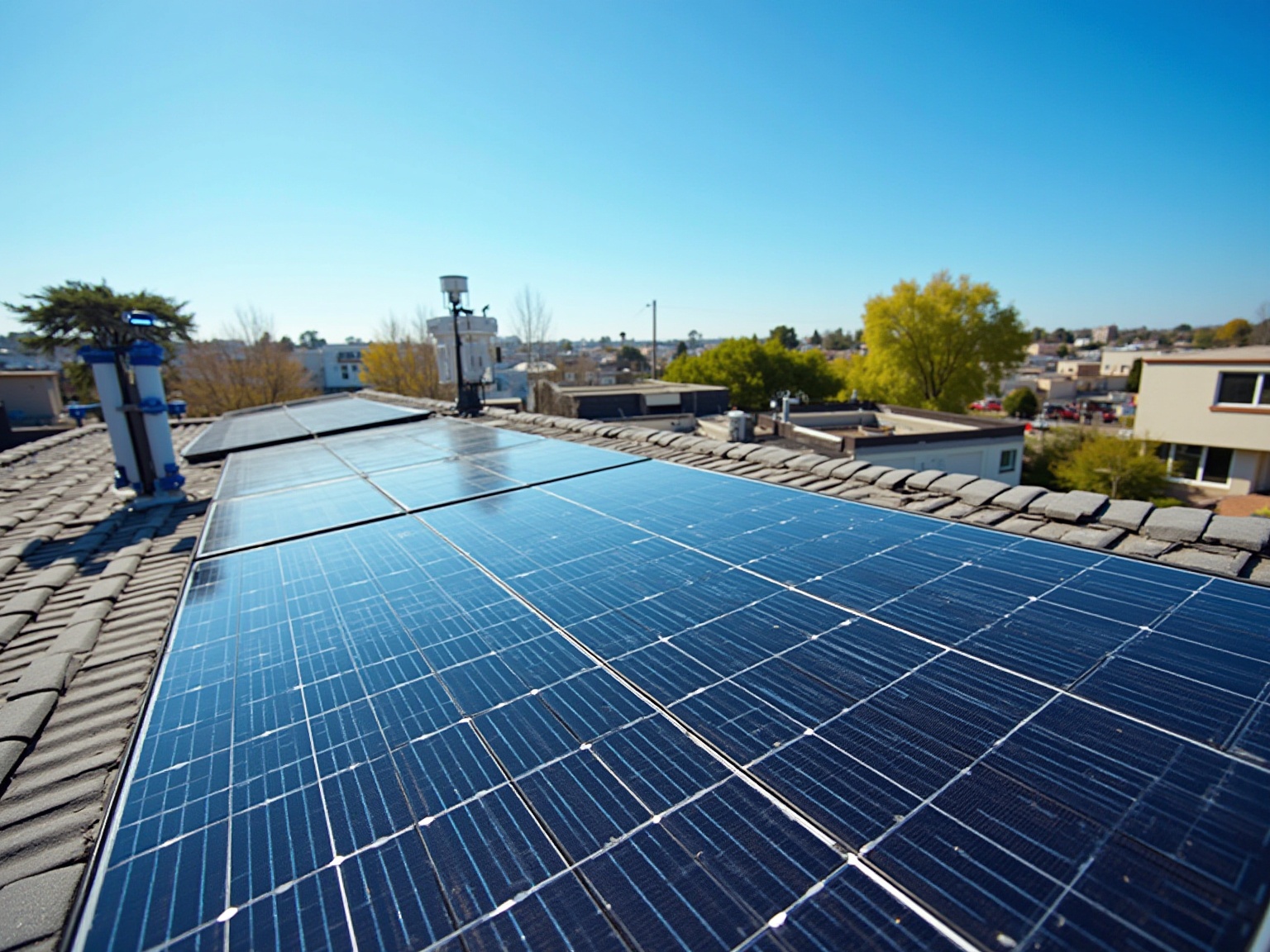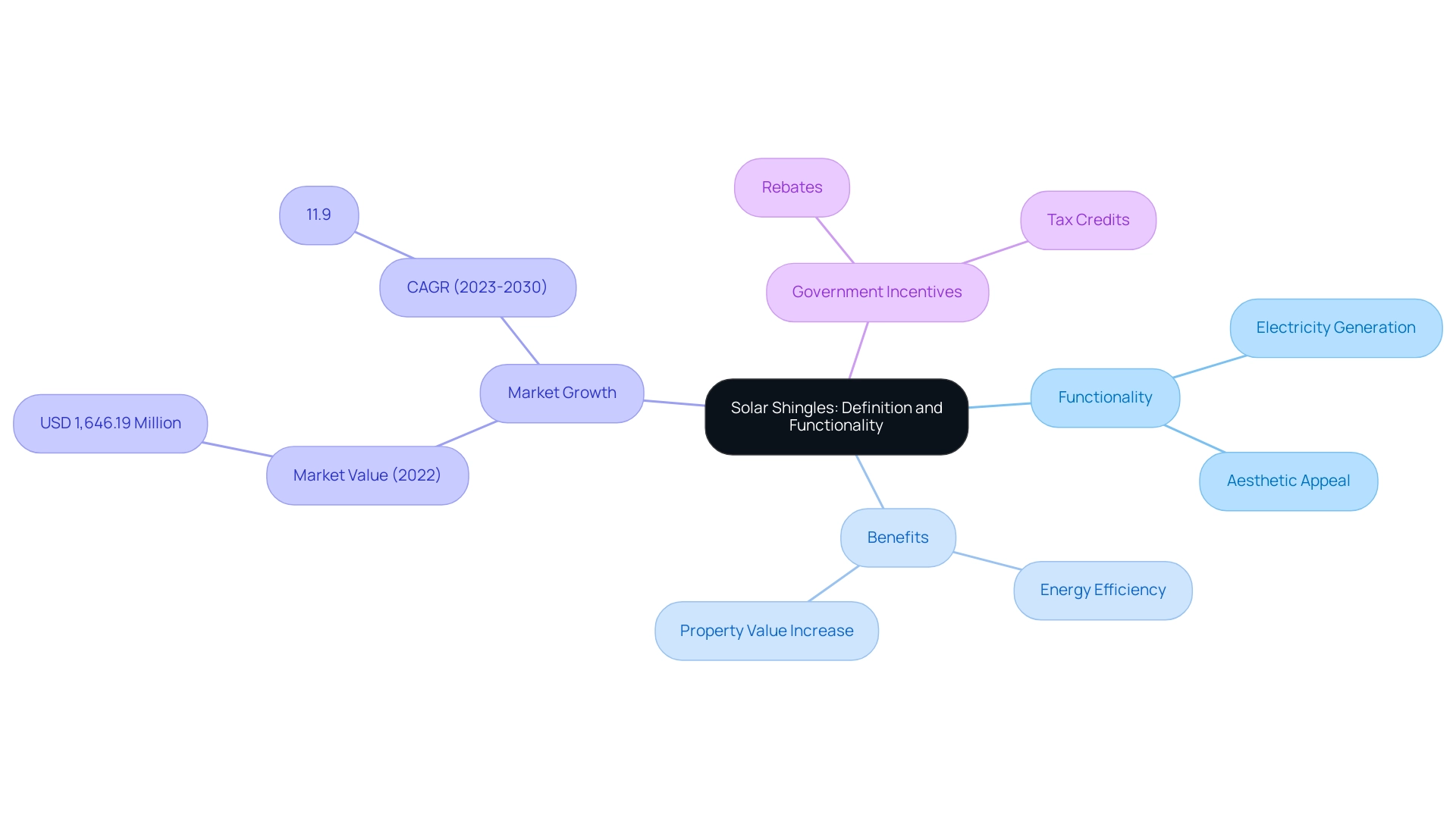Overview
The article compares various solar shingle companies to determine which offers the best value for homeowners. It highlights key factors such as installation costs, efficiency ratings, warranty options, and unique selling points of brands like Tesla, GAF, and CertainTeed, emphasizing that understanding these aspects is crucial for making an informed decision in the growing market for solar roofing solutions.
Introduction
With the rising awareness of environmental issues and the quest for sustainable living, solar shingles have emerged as a game-changer for homeowners looking to harness renewable energy without compromising on style. These innovative roofing solutions not only protect homes but also generate electricity, seamlessly blending functionality with aesthetic appeal.
As the market for solar shingles expands, homeowners are presented with a myriad of options and financial incentives that can significantly enhance the value of their properties. This article delves into the ins and outs of solar shingles—from understanding their functionality and evaluating costs to weighing the pros and cons and exploring top brands.
By navigating this essential information, homeowners can make informed decisions that align with their energy goals and contribute to a greener future.
Understanding Solar Shingles: Definition and Functionality
Solar tiles represent a cutting-edge approach to roofing that integrates photovoltaic technology, offering eco-conscious homeowners the unique advantage of generating electricity without sacrificing aesthetic appeal. In contrast to conventional photovoltaic panels usually installed on existing rooftops, roof tiles integrate smoothly into the structure, acting as both a protective layer and a source of power. They operate by converting sunlight directly into electricity, which can either power your home or be sent back to the grid for credit on your utility bill.
This dual functionality not only enhances energy efficiency but also boosts your property’s overall value. For homeowners contemplating installation, solar shingles companies typically provide photovoltaic tiles that measure 12 inches by 86 inches and weigh approximately 13 pounds each, making them manageable for setup. Furthermore, comprehending local government programs can offer substantial financial advantages; many solar shingles companies indicate that states provide incentives, such as tax credits or rebates, to support panel installations.
As the market for photovoltaic roof tiles grows—valued at USD 1,646.19 million in 2022 and expected to increase at an impressive CAGR of 11.9% through 2030—homeowners can gain insights into the economic environment of renewable resources that may influence their choices. States such as Utah, Texas, and Pennsylvania are adopting renewable power, highlighting distinct advantages and efforts in broadening their renewable footprint through residential and utility-scale projects. With their innovative design and efficiency, solar shingles companies are making renewable energy tiles an appealing option for those looking to invest sustainably in their homes.
For additional details on available government incentives, homeowners are urged to visit local energy offices or consult with installation companies.
Cost Analysis: Evaluating the Financial Benefits of Solar Shingles
When evaluating roofing options for your residence, it’s essential to thoroughly assess both installation expenses and the long-term financial advantages. The initial investment for photovoltaic shingles typically ranges from $20,000 to $40,000—depending on your roof’s size and the brand you choose. In Illinois, after applying incentives, the average cost for a photovoltaic system comes to about $24,996.
Many homeowners report impressive reductions in their electricity bills, often by as much as 50%, highlighting the substantial potential savings. Furthermore, federal tax credits and different state incentives can further reduce those initial expenses, turning alternative roofing into a financially wise option over time. As Bianca Howard, Director of the Building Energy Research Lab at Columbia University, points out, ‘What you’d want to know is the equivalent amount per square foot that you can get.’
This emphasizes the need to grasp both installation expenses and future savings potential. Performing an energy assessment is essential to ascertain how many tiles you require based on your energy usage, as different photovoltaic tiles generate varying wattage outputs, with traditional panels typically offering greater wattage. Moreover, while warranties for photovoltaic roof materials generally last at least 25 years, some may provide coverage for only five to ten years, which is crucial for homeowners making long-term investments.
With strong warranties and the opportunity for substantial savings, photovoltaic tiles offer not only an eco-friendly option but also a dependable one. Moreover, when contrasted with conventional energy panels, roof tiles may entail a greater initial expense yet can integrate smoothly with your roof, providing visual advantages. Property owners should also contemplate accessible governmental incentives that can considerably lower the total expenses, making solar tiles an attractive choice for environmentally aware property owners.
Pros and Cons of Solar Shingles: Weighing the Benefits and Drawbacks
Solar shingles offer a unique blend of advantages that make them an appealing choice for eco-conscious homeowners. Their design seamlessly integrates with traditional roofing materials, enhancing the overall aesthetic of your home while offering savings and the potential to boost property value. As CertainTeed indicates, you can anticipate the expenses to range between that of a standard photovoltaic system and a complete roof installation, based on your roof dimensions and specifications, making them an appealing choice for those seeking to invest in renewable sources.
Additionally, photovoltaic roof tiles aid in energy autonomy by enabling residences to produce their own electricity. It’s worth noting that Suntegra products are made with 50% fewer materials than conventional rack-mounted PV systems, underscoring their sustainability. However, it’s important to consider some challenges associated with photovoltaic tiles.
- Installation can be more complex and costly compared to conventional panels, which are often more flexible and compatible with various roof types, making them a better option for flat roofs.
- Moreover, the effectiveness of solar roofing materials may differ based on particular circumstances, and not all types of roofs are suitable for them, which could limit choices for certain property holders.
- To maximize the advantages of sunlight power, homeowners should also investigate government programs that can offer financial incentives and assistance for installation.
Routine upkeep, including panel cleaning services, is essential for guaranteeing optimal performance and durability of both photovoltaic tiles and conventional systems. Moreover, considering battery options for power storage can further enhance the efficiency of your photovoltaic setup. By thoughtfully evaluating these advantages and disadvantages, along with examining alternative solutions such as Tesla home chargers and government initiatives, you can better determine whether photovoltaic roofing meets your power requirements and aligns with your financial strategies.
Top Solar Shingle Brands: Who Offers the Best Value?
In the constantly changing rooftop panel market, a few solar shingles companies truly excel, including Tesla, GAF, and CertainTeed. Tesla’s energy tiles are praised for their stylish appearance and smooth incorporation with residential energy systems, making them a favored option among design-aware residents. Notably, Tesla Solar guarantees that its solar roof’s production won’t drop below 95% of its original level five years after installation, adding to its appeal despite the premium price.
On the other hand, GAF offers a more budget-friendly option with their Timberline Solar shingles, which are part of the offerings from solar shingles companies, prioritizing durability and impressive efficiency—ideal for individuals seeking value without sacrificing quality. Meanwhile, CertainTeed stands out with a diverse range of styles and colors, allowing homeowners to customize their roofs to perfectly complement their existing architecture. Each brand of solar shingles companies has its unique strengths and weaknesses, so it’s crucial to weigh factors like warranty and efficiency when making a choice.
For example, Luma Solar boasts an efficiency rating of 22.10% and a wattage per square foot of 14.9, significant for performance metrics. Additionally, Luma’s power output warranty guarantees that your rooftop’s performance won’t have decreased by more than 80% after 25 years. Comprehending how photovoltaic panels function is crucial; they transform sunlight into electricity via photovoltaic cells, which can be placed on roofs or as tiles.
When considering your options, think about the installation process as well—proper installation is key to maximizing efficiency and longevity. As you explore your options, consider not only the aesthetic appeal but also the long-term benefits, warranty details, and maintenance needs of each brand. This thoughtful approach will help you find the best fit for your eco-conscious home, ensuring you make a decision that aligns with both your values and your energy needs.
Installation and Warranty Considerations: Ensuring Quality and Reliability
When exploring the realm of renewable roofing, it’s crucial for environmentally aware homeowners to think about both the installation procedure and the warranty choices provided by various firms. A properly carried out installation is essential to guaranteeing that your rooftop panels function at optimal efficiency and have a prolonged lifespan. Contemporary photovoltaic tiles can generate between 60 to 71 watts of power, highlighting their effectiveness and worth.
That’s why partnering with a provider known for experienced installers is so crucial. Warranties can vary widely among brands, with some providing coverage for up to 25 years on both the shingles themselves and the energy they generate. As policy analyst Ben Zientara emphasizes, ‘The 2024 report is our second annual publication, utilizing data from our survey about installer-preferred brands and featuring new data about stateside manufacturing capacity.’
This insight serves as a reminder for homeowners to read warranty terms carefully to grasp what is covered and for how long. Furthermore, with the Inflation Reduction Act enhancing deployment projections by 46%, it’s an opportune time to invest in renewable energy solutions. Although the residential market for photovoltaic systems faced a 4% decline in installations in Q3 2024 due to challenges like high electricity bills and changes in California’s net metering rules, prioritizing high-quality installation and robust warranties not only secures your investment in renewable resources but also paves the way for a brighter, more sustainable future for your home.
To navigate the installation process effectively, property owners should consult a step-by-step guide that outlines the necessary actions and considerations. Additionally, understanding the various services offered by solar companies, such as installation, maintenance, and battery storage options, can help homeowners make informed decisions about their solar energy needs.
Conclusion
Exploring the world of solar shingles reveals a remarkable opportunity for homeowners to embrace renewable energy while enhancing their property’s aesthetic and value. These innovative roofing solutions not only generate electricity but also seamlessly integrate into existing home designs, making them an appealing choice for those committed to sustainable living. By understanding the functionality of solar shingles, evaluating costs and potential savings, and weighing the pros and cons, homeowners can make informed decisions that align with their energy goals.
The financial benefits of solar shingles are significant, with many homeowners experiencing substantial reductions in electricity bills and the potential for government incentives to ease the initial investment. While there are challenges associated with installation and efficiency, the long-term savings and environmental impact make solar shingles a worthwhile consideration. Leading brands like Tesla, GAF, and CertainTeed offer various options to suit different preferences and budgets, ensuring that homeowners can find a solution that fits their needs.
Ultimately, investing in solar shingles is not just about energy savings; it’s about contributing to a greener future. As the market for solar technology continues to grow, homeowners are positioned to take advantage of this trend, enhancing their homes while supporting sustainable practices. With careful planning and consideration, solar shingles can lead to a brighter, more energy-efficient home that reflects a commitment to both style and environmental responsibility.



